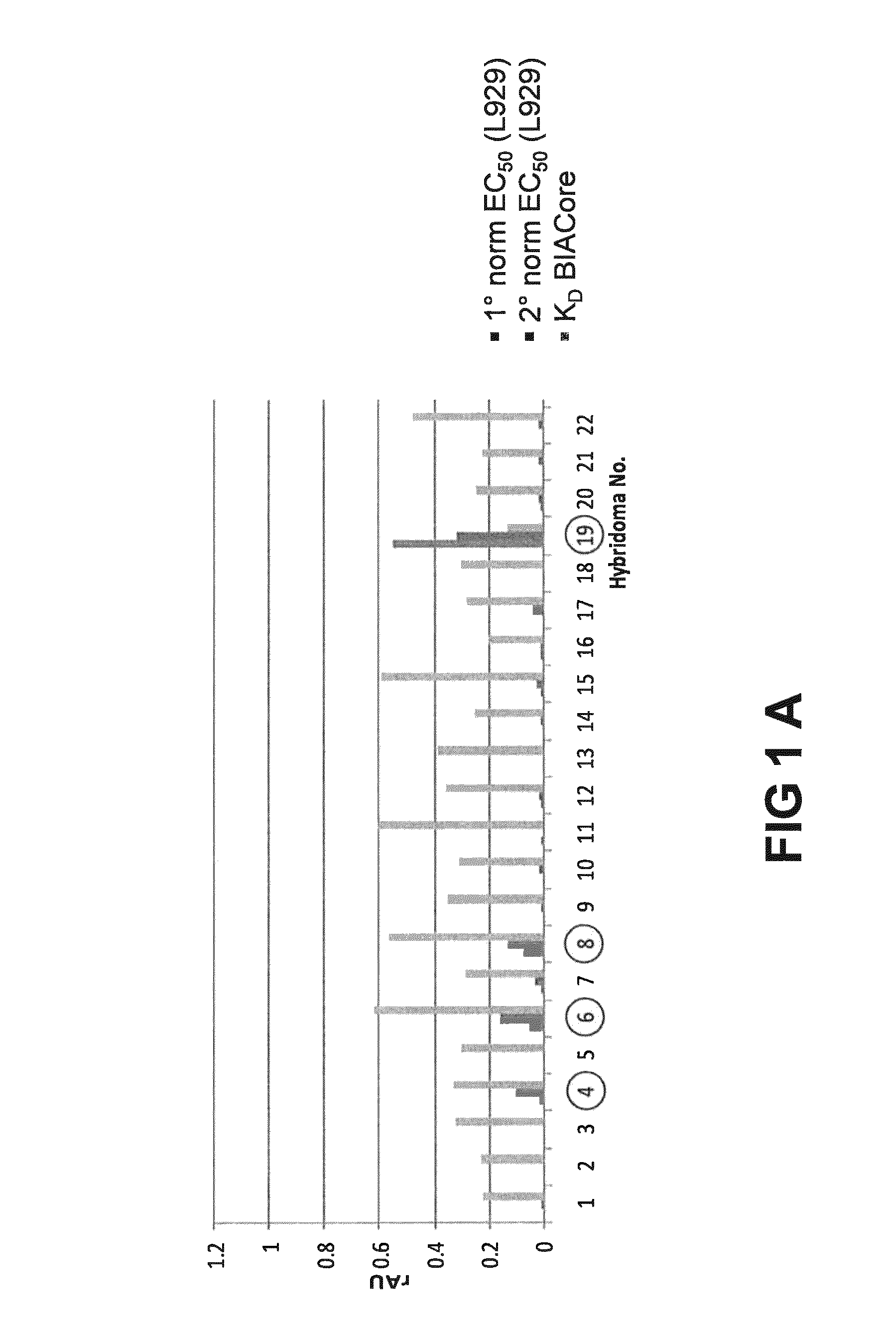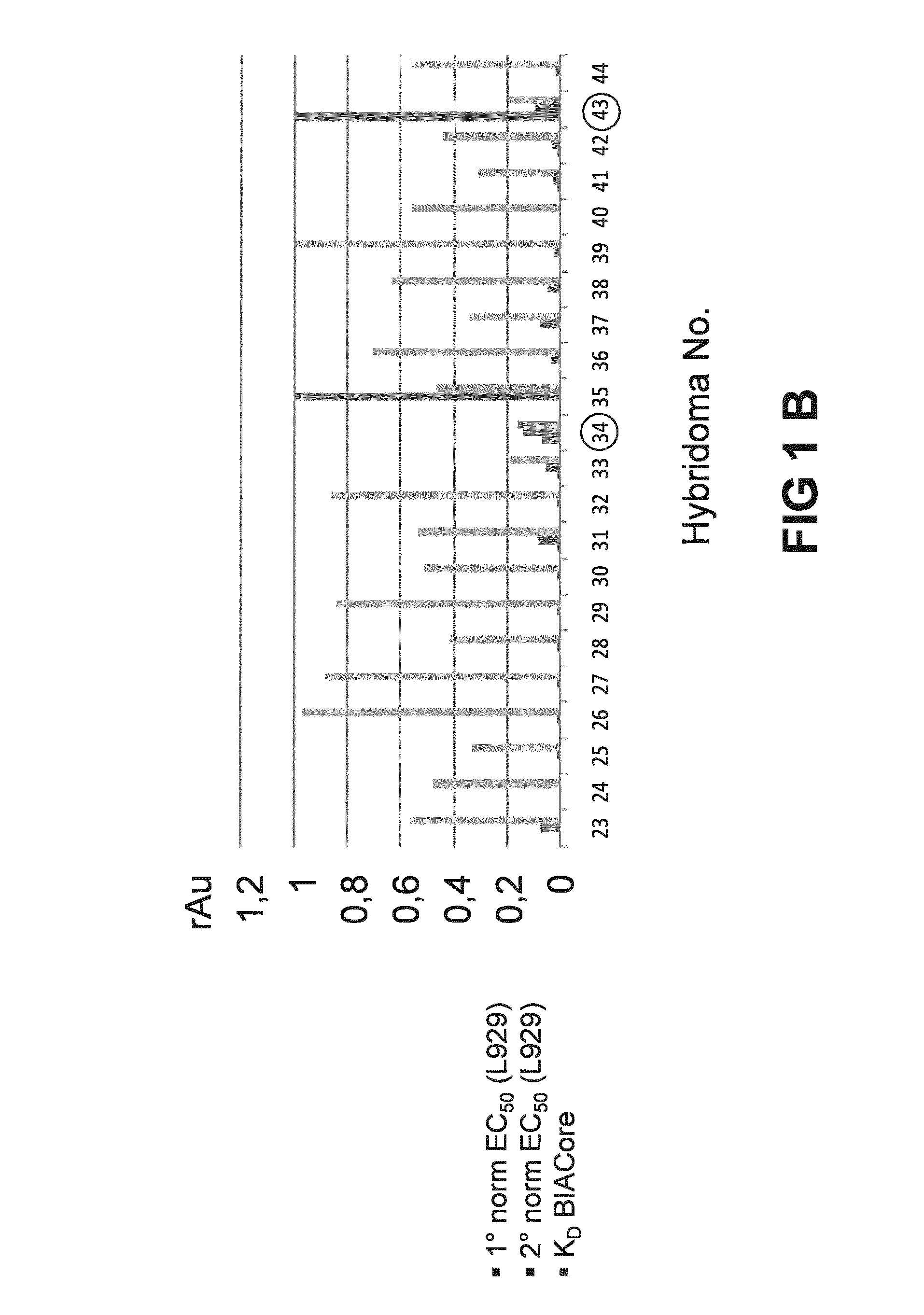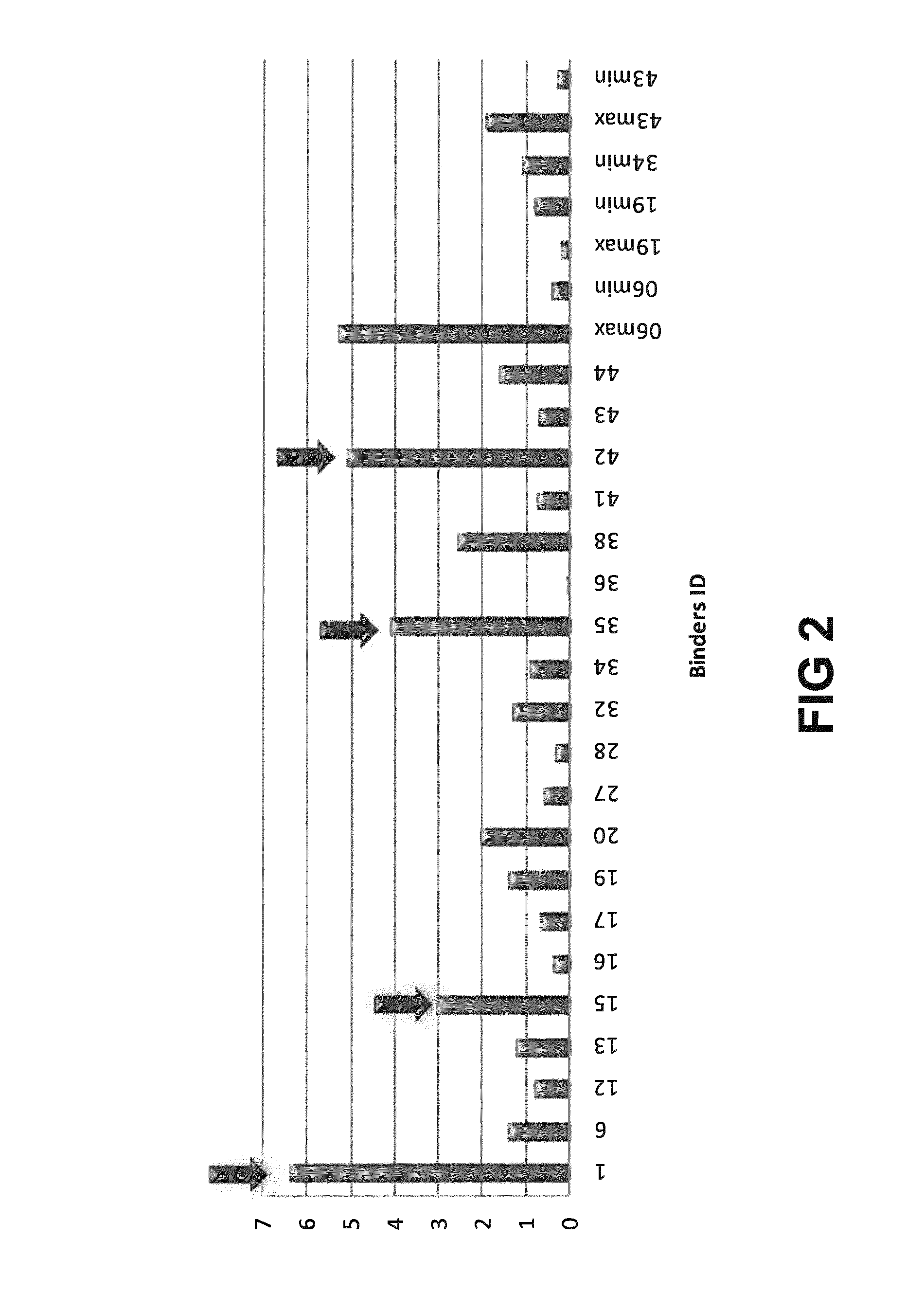Stable and soluble antibodies inhibiting TNFalpha
a technology of soluble antibodies and tnfalpha, which is applied in the direction of immunological disorders, drug compositions, metabolism disorders, etc., can solve the problems of limited distribution volume of tnfalpha, and achieve low immunogenicity, stable solubility, and in vitro and in vivo binding.
- Summary
- Abstract
- Description
- Claims
- Application Information
AI Technical Summary
Problems solved by technology
Method used
Image
Examples
example 1
CDR Grafting and Functional Humanization of Monoclonal Rabbit Anti-TNF Antibodies
Grafting of Rabbit CDRs
[0219]Unlike traditional humanization methods which employ the human antibody acceptor framework that shares the greatest sequence homology with the non-human donor antibody, the rabbit CDRs were grafted into either framework FW1.4 (SEQ ID Nos. 1 and 2, linked by a (GGGGS)4 linker) (SEQ ID NO: 72)) to generate a Min-graft or into the “rabbitized” framework rFW1.4 (SEQ ID No. 92) or its variant rFW1.4(v2) (SEQ ID No. 93) to generate a Max-graft. Both frameworks were selected primarily for desirable functional properties (solubility and stability), structural suitability to accommodate a large variety of rabbit CDRs and reasonable homology to the rabbit variable domain consensus sequence. Framework rFW1.4 is a derivative of FW1.4 that was further engineered with the aim to serve as universal acceptor framework for virtually any set of rabbit CDRs. Although the stable and soluble fra...
example 2
Profiling and Selection of Rabbit CDR Donor Antibodies
[0223]The general experimental procedure that was followed for the selection of Rabbit antibodies (“RabMabs”) with TNF inhibitory activity Is as follows: The rabbit antibodies were employed as donor antibodies for CDRs in the generation of highly soluble TNF immunobinders. Rabbits were immunized with TNFα prior to splenectomy. Splenocytes were isolated from the rabbits for the generation of hybridomas. A total of 44 hybridomas were isolated and supernatants from these hybridomas were profiled for binding affinity, biological potency, and binding specificity.
[0224]FIG. 1 depicts the relative ability of the supernatants from the 44 anti-TNF RabMab hybridomas in neutralising TNFα in vivo. Neutralization was tested by measuring inhibition of cytotoxicity of TNFα in cultured mouse L929 fibroblasts. The supernatants display different efficacies in the L929 assay. EC50 values (effective concentration to achieve 50% inhibition) were dete...
example 3
CDR Grafting and Functional Humanization of Rabbit Donor Antibodies
[0226]Unlike traditional humanization methods which employ the human antibody acceptor framework that shares the greatest sequence homology with the non-human donor antibody, the rabbit CDRs were grafted into a human framework (FW 1.4) that was preselected for desirable functional properties (solubility and stability) using a Quality Control assay. Although the stable and soluble framework sequence exhibited high homology with the RabMab, the selected acceptor antibody is not the most homologous sequence available.
[0227]A number of CDR grafts were generated for each of the rabmabs. The term “Min-graft” or “min” as used herein refers to a humanized variable domain that was generated by grafting of rabbit CDRs from a rabbit variable domain into a naturally occurring human acceptor framework (FW 1.4, SEQ ID Nos. 1 and 2, linked by a (GGGGS)4 linker (SEQ ID No: 72)). No changes in the framework regions are made. The fram...
PUM
| Property | Measurement | Unit |
|---|---|---|
| Tm | aaaaa | aaaaa |
| Tm | aaaaa | aaaaa |
| dissociation equilibrium constant | aaaaa | aaaaa |
Abstract
Description
Claims
Application Information
 Login to View More
Login to View More - R&D
- Intellectual Property
- Life Sciences
- Materials
- Tech Scout
- Unparalleled Data Quality
- Higher Quality Content
- 60% Fewer Hallucinations
Browse by: Latest US Patents, China's latest patents, Technical Efficacy Thesaurus, Application Domain, Technology Topic, Popular Technical Reports.
© 2025 PatSnap. All rights reserved.Legal|Privacy policy|Modern Slavery Act Transparency Statement|Sitemap|About US| Contact US: help@patsnap.com



